Will Ironman CEO Andrew Messick be remembered for more than Nice and Kona? He should be
"The future is that women deserve to have their own race, they deserve their own platform for racing and that is a hill I am going to die on. If you don’t like it, go lobby the next CEO."
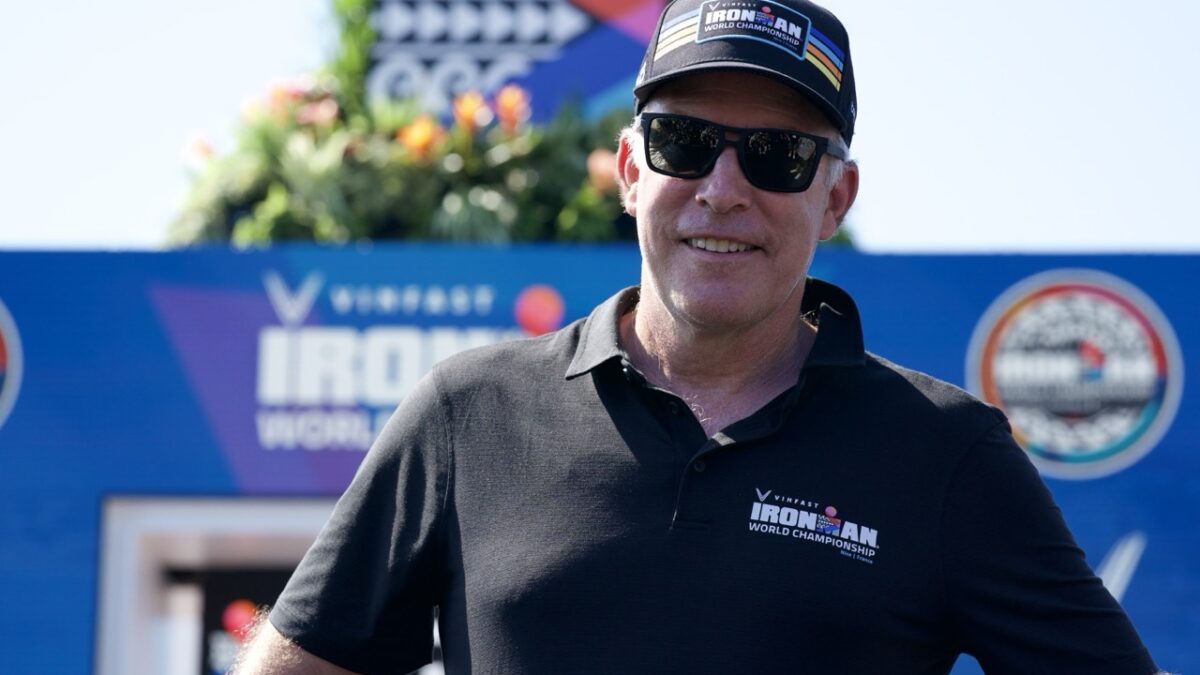 Photo by:
Kevin Mackinnon
Photo by:
Kevin Mackinnon
Talk to anyone who was there and they’ll tell you that the 2023 Ironman World Championship in Kona was a resounding success. The first women’s only world championship event featured over 2,000 women, many competing on the Big Island for the first time. Throughout race week there was a positive vibe in Kailua-Kona, with race-day providing the climax to the week. The women blew away the previous finish-percentage record with over 97 per cent of the field getting across the line. Add to that a pro women’s race that featured all the world’s top long-distance athletes, with over a million people tuning in to watch the exciting race. The day lived up to all the hype. It’s hard to imagine that a women’s-only Ironman World Championship isn’t going to be a staple for the sport in the future.
The man behind that huge day, ironically, is often described by his critics as “destroying the sport.” When it was announced last year that Ironman would be splitting the world championship to two venues last year with the men competing in Nice and the women in Kona, many proclaimed that Ironman CEO and President Andrew Messick had missed the boat and Ironman would never be the same. They were right on the one hand – Ironman will never be the same – but after that huge day on the Big Island, it’s hard to argue that Messick had made a mistake.
His critics will stick by that message, though. They’ll ignore the fact that since he started with Ironman in 2011 the company has grown dramatically. That the Ironman 70.3 World Championship, and now the Ironman World Championship, have each become two-day events that showcase the men and women on different days.
And, for those critics, let me quickly state my conflict here. I worked with Messick for my last five years at Ironman, and during that time he couldn’t have been more supportive to me and my family. While I didn’t always agree with him, I always felt that he was open to my point of view, and I was never afraid to express that to him.
Which is why, during a “Life of Tri” podcast with Messick in Kona, I felt comfortable enough to describe him as a “triathlon geek” and know that he wouldn’t take offence to that description. We’re sitting on a rock wall at the King Kamehameha Hotel just a few days before that first women’s only Ironman World Championship. This is the fourth or fifth long interview Messick has had that day, but he pushed his team to find some time for me when our interview window the day before got shortened. It’s the last interview I’ll do with Messick for this feature, and I’m determined to get his response to some of the criticisms that have been made of his tenure as arguably the sport’s most important executive. That all Ironman cares about is making money. That this women’s-only race has diluted what it means to be an Ironman qualifier. That the Nice/ Kona combination is a terrible move for the sport.
I got him more than a little “fired up” with those questions, but he was more than happy to answer them. Bear with me – we’ll get to that below.
Moving on
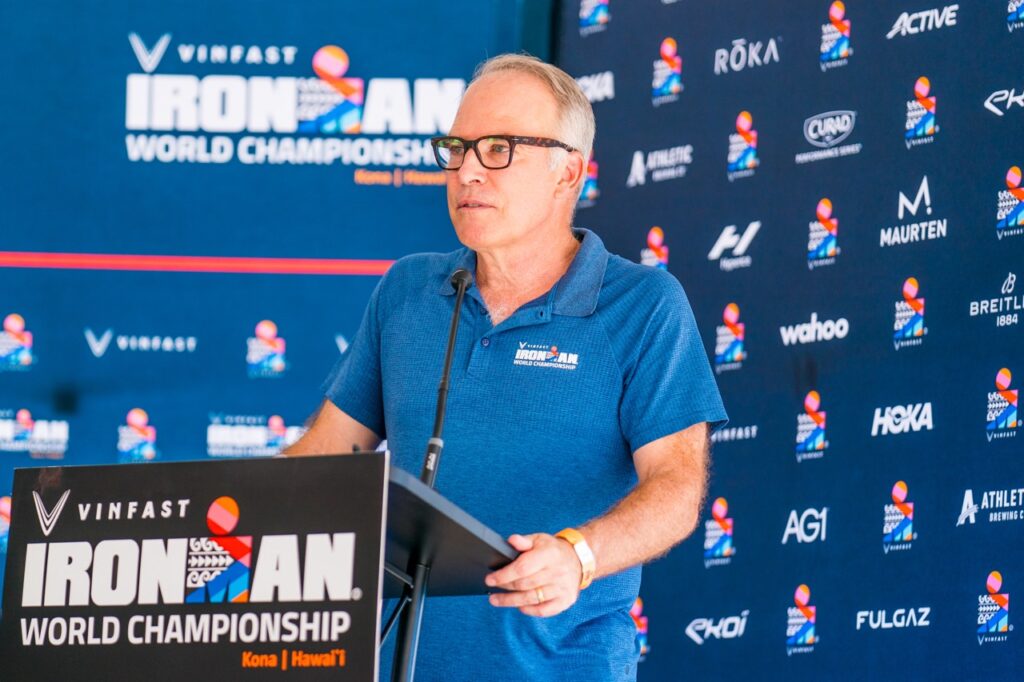
In July Messick announced that he was retiring as the CEO and President of Ironman. A 12-year career at the helm of the sport’s flagship organization was coming to an end. We wrote extensively on Messick’s achievements and background – you can read more on that in the links below.
Andrew Messick retires after 12 years as President and CEO of Ironman
That announcement forced us to look back at all that’s happened to the company since Messick took over, and it is eye-opening to see just how much Ironman has grown and developed. During his tenure, Ironman moved from being a long-distance triathlon company to the world’s largest organizer of mass participation events.
Ironman milestones during Andrew Messick’s tenure as Ironman President and CEO
Passion
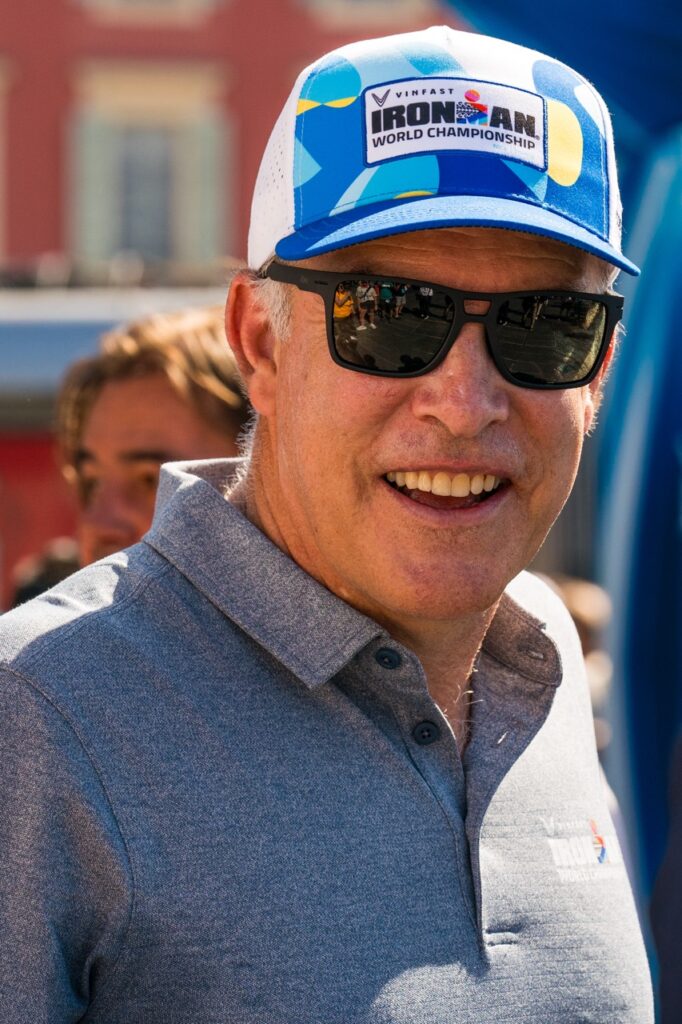
I first met Messick at the Ironman European Championship in Frankfurt, and it was immediately obvious that Messick was truly passionate about Ironman racing. He would grill me for hours trying to come up with ways we could improve the Ironman text coverage that I was responsible for. Over the next few years he drove race directors crazy asking for more spotters out on the course so I could get more information for my updates. He continually pushed me to find better ways to cover the age group racing, too.
It’s that passion that has always made me laugh when I’ve heard people complain that Messick doesn’t support the professional side of the sport. No organization has been able to come up with a way to make money through pro racing, but for Messick, professional athletes are an integral part of the sport. I sat through meetings during my time at Ironman when the majority of the voices around the boardroom table would argue that it made no sense to spend more money on pro racing, and was relieved to find that Messick would be ready to back me up and argue that our sport really does need a professional presence.
“I was an age group athlete years and years and years before I got this job, so I come by my passion for the sport honestly,” Messick says. “What I get to do here race week – I get up and swim to the coffee boat and speak to athletes. That’s not what the other 51 weeks of the year are like. If you love the sport and you love triathlon, doing all that other stuff that maybe isn’t that much fun is worth it when you come here.”
Pro series
You can read more about the Ironman Pro Series below, but we’ll focus on why Messick was keen to make it happen.
“Ironman has always been around,” he says. “(Other series, such as) Tristar were around for a while. Rev3 has been around for a while. Challenge Family has been around for a while. Challenge Roth has always been a great race – the Walshshofers do an amazing job. Now the PTO is here. But, through all of that, the foundation has always been Ironman, and we expect that the foundation will continue to be Ironman. We felt it was time for us to demonstrate some leadership and take some forceful steps to regain the attention and focus and trust of our professional athletes.”
Fired up
Which brings me back to our conversation on that wall near the King Kamehameha. I’m probably not at my best, reacting to comments on some of the Triathlon Magazine web stories that we “were the same as Ironman.” I’m determined to ask some tough questions, as if that will somehow make a difference to those commenters. Before I get there, though, I ask what Messick is most proud of from his time as CEO.
“The way we have evolved our championship races,” he says quickly, as a follow up to pointing out that, while the company has expanded dramatically, “long-distance triathlon remains the beating heart of the company.”
“The 70.3 worlds, when I joined the company, was this little race in Henderson, Nevada,” he continues. “The evolution of that race from that to this thing that we saw in Lahti, where we saw over 6,000 people race. The evolution of that race where we’ve seen it rotate around the world. The team has done an amazing job of elevating the 70.3 world championship into one of the most exciting races in the world.”
“I think what the team has done here, is equally as amazing,” he says. “One year ago, here (in Kona) we were certain that in 2023 we were having two days of racing … Then, after the race, it became apparent that the community wasn’t ready to have two days of racing. We had to figure out a solution. We had to figure out whether to move backwards and have one day of racing. Then we made the agreement with the Ville de Nice. We did all that in one year.”
“The future is that women deserve to have their own race, they deserve their own platform for racing and that is a hill I am going to die on,” Messick concludes. “If you don’t like it, go lobby the next CEO.”
But why did it have to happen so fast? Why go from 700 or 800 women to over 2,000? I was at roll downs where we went through an entire age group of names, and no one took a slot. I witnessed athletes finish in the last half hour of an Ironman who earned slots to the world championship.
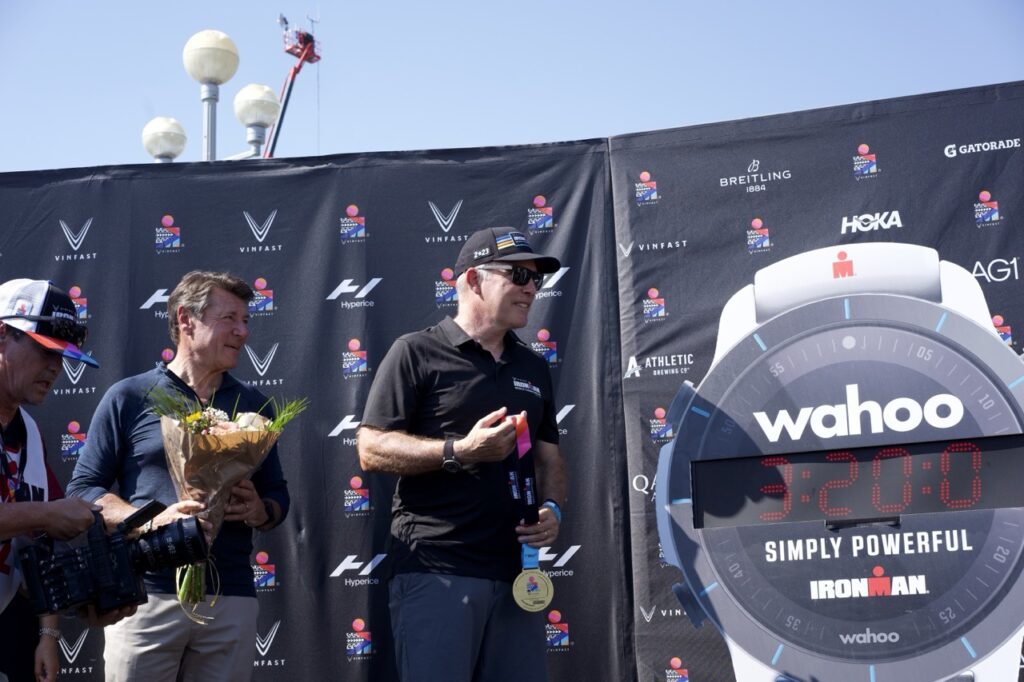
“There are four times more men racing Ironman than women,” Messick points out. “We’re trying to fix that. The pool of women from which to we are endeavoring to select a world championship field is different because there are fewer of them. I think it’s a false narrative that there needs to be a single qualifying procedure. There was no margin for error for women when there was 700 or 800 women competing in Kona. It’s competitive for men, I get it. But part of the history for the Ironman World Championship is that there has always been a blend of people who are fast, and a blend of people who are not fast. There was a lottery for many years, now there is legacy program. But anyone who knows about our system … doesn’t begrudge the legacy athletes.”
Messick points out that we celebrate the stories of Michael Collins, son of Ironman founders John and Judy Collins, who remembers taking 28 hours to finish one of the early Ironman World Championship events. He was still on the run course when the paper with the results of the race were being delivered. Where’s the “righteous indignation” about that, Messick wonders.
“John and Judy Collins in the very beginning, created the lottery program explicitly so that people who weren’t super-fast had a chance to race here,” he says. “Embedded at the deepest level of our DNA of our sport is that the people who aren’t super-fast deserve to be here.”
“We believe qualifying for the world championship should mean something,” Messick continues. (Since our conversation, Ironman has announced a new qualifying process for the women’s world championship in Nice that will include some 70.3 events and automatic qualification for athletes who finish in the top-10 in their age group.) “Within that context, there have always been times when roll down slots have gone down a long way. In the past that’s been celebrated. For some reason now … it’s a disaster.”
Show me the money
I’m on a roll, so I ask Messick for his response to the criticism I hear so often that, for Ironman, it’s all about the business.
“I don’t think people have any idea how expensive it is to put on an event,” he says. “In terms of money, in terms of people, resources. The budget for this race (Kona) is well in excess of US$5 million. We have 100 staff here that we fly in, that we accommodate. People have been here for weeks. The equipment, the road closures … The cost of these events is astonishing and going up. Believe me, the path we’ve taken is not the one for profit optimization in the short term, but we’re doing it because we think it’s the right thing.”
“We are a business, we have to have revenue that exceeds our costs or we go broke, like every other business in the world,” he continues. “And, by the way, it’s not lost on us that when we talk about all the companies that competed with us – the TriStars, the Rev3s … they all went broke. We haven’t. I’m not going to apologize for running the company like a business. Age-group athletes, our partners, our host communities, our professional athletes, know that part of our goal is to be around in 10 years, in 30 years, in 50 years, and that we’re going to make promises that we can keep. That we’re going to behave in the long-term interests of Ironman and that people can trust us.”
“Ironman athletes in our Ironman community have a lot of opinions and a lot of points of view,” Messick concludes.
“Overwhelmingly those points of view, those strongly held views, come from a place of passion and commitment and belief in Ironman. That’s not lost on me. It’s better to have people who care enough to be passionate than people who don’t give a damn. Accepting the feedback is part of my job, and I listen carefully and respectfully.”
Andrew Messick: I wanted Ironman to be a bigger, more powerful, more international sports brand
Legacy
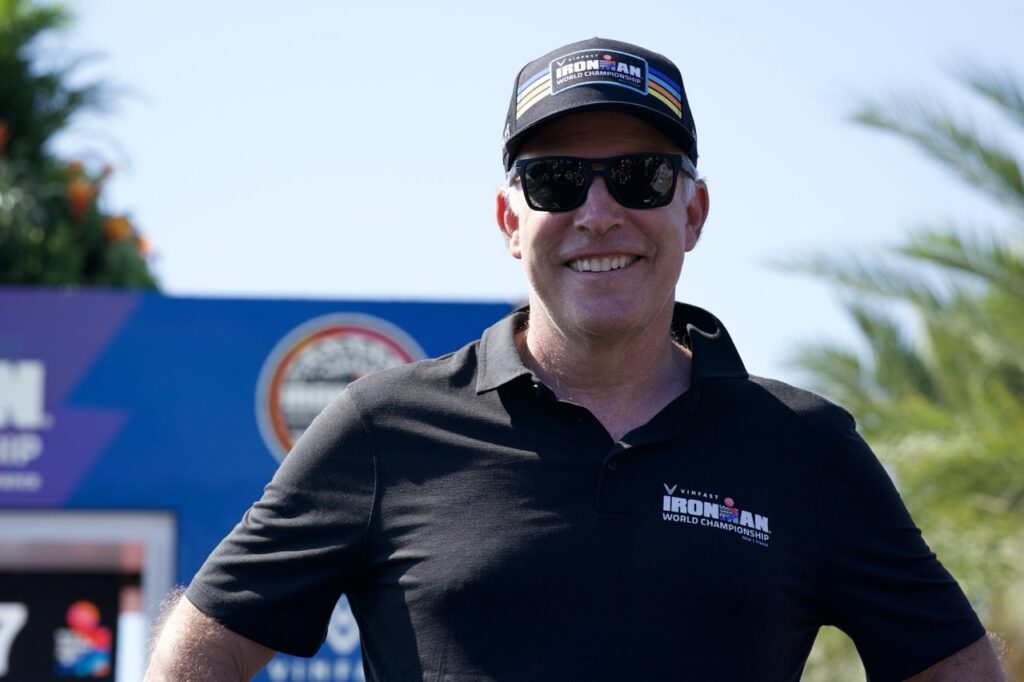
It’s hardly news that Ironman is possibly the most criticized organization in the sport, which has put Messick in the spotlight more than a few times during his 12 years with the company.
As Messick admits, “no one’s decision making process is perfect.”
In the end, though, it is important to remember that, at his heart, Messick is, if not a triathlon “geek,” at least a junkie and avid age grouper. Rolling swim starts, a measure that came into play after he started at the company, got a lot of support because of his own personal feelings about swim starts.
Whether his critics like it or not, his legacy will be much more than rolling swim starts. It will be the globalization of Ironman and Ironman 70.3 racing. It will include the grown Ironman experienced as a company. And it will include a truly women’s only day of racing at the Ironman World Championship.
While there will certainly be those critical of Messick and his tenure with Ironman, others will argue that the company, and long-distance racing, is in a better place now than it was when he started. Feel free to disagree with that statement, too. As a member of Ironman’s board of directors in the future, Messick will be happy to listen and evaluate your criticism. For me that will always be his biggest strength – the guy loves the sport so much he’s open to any idea on what would make it better.
A longer version of this story originally appeared in the Triathlon Magazine Nice/ Kona Special.
